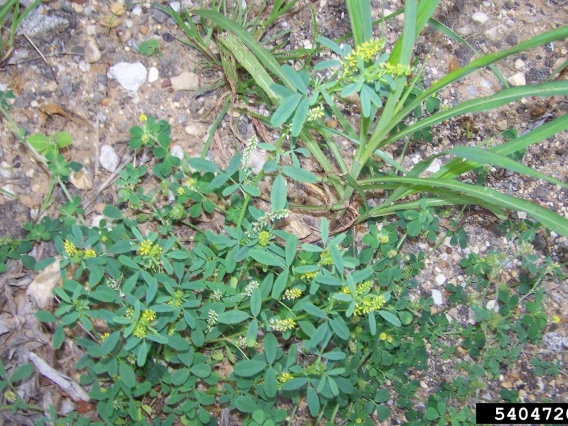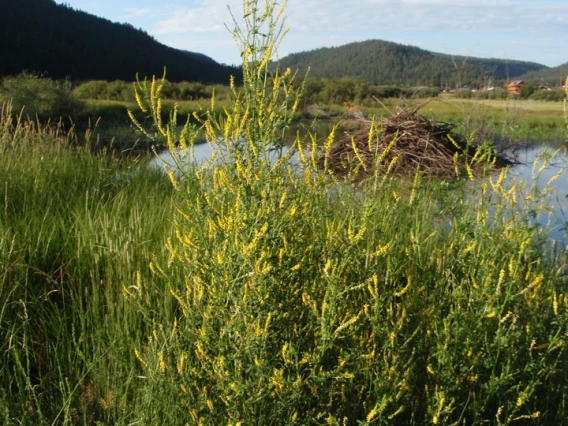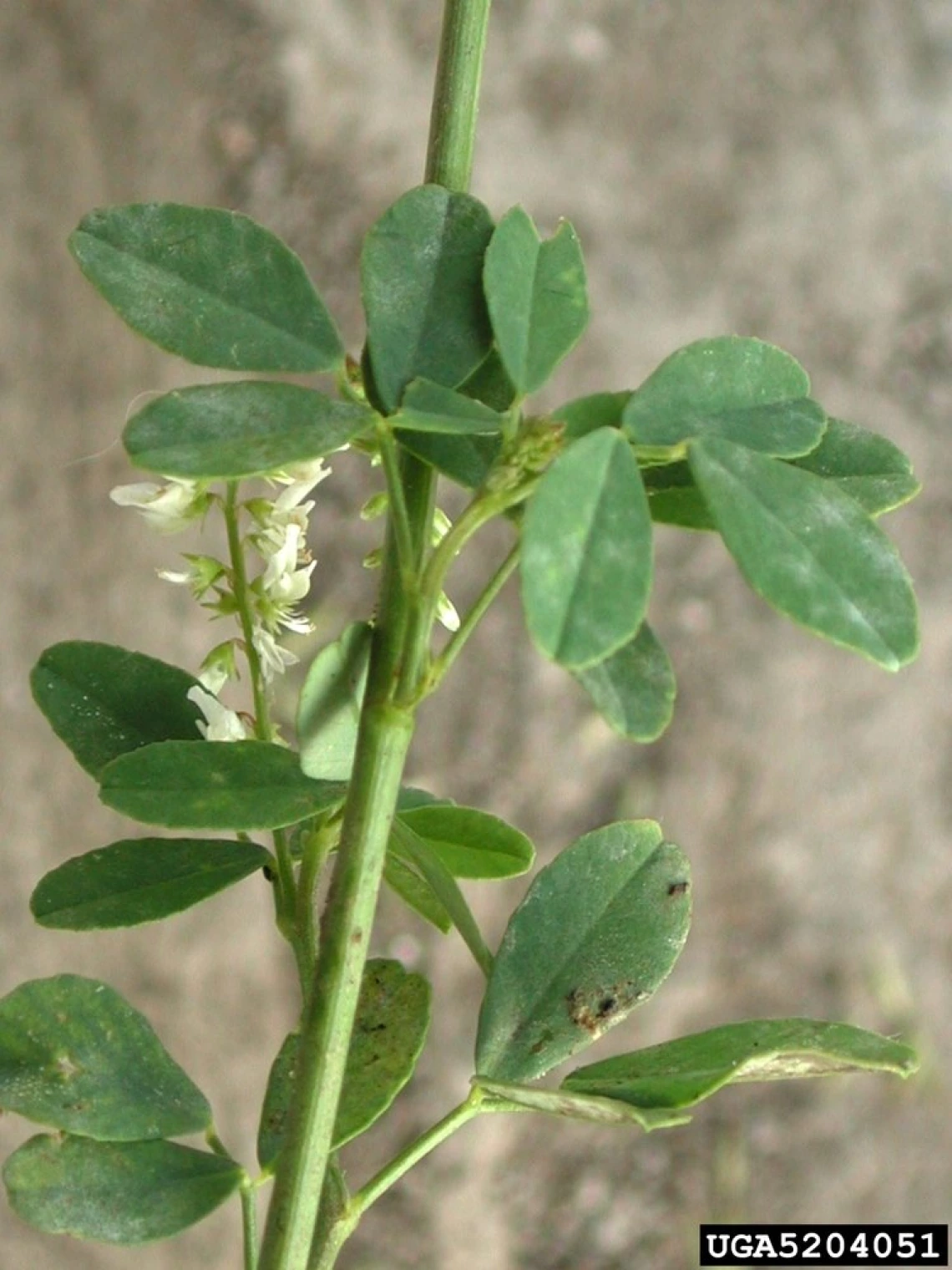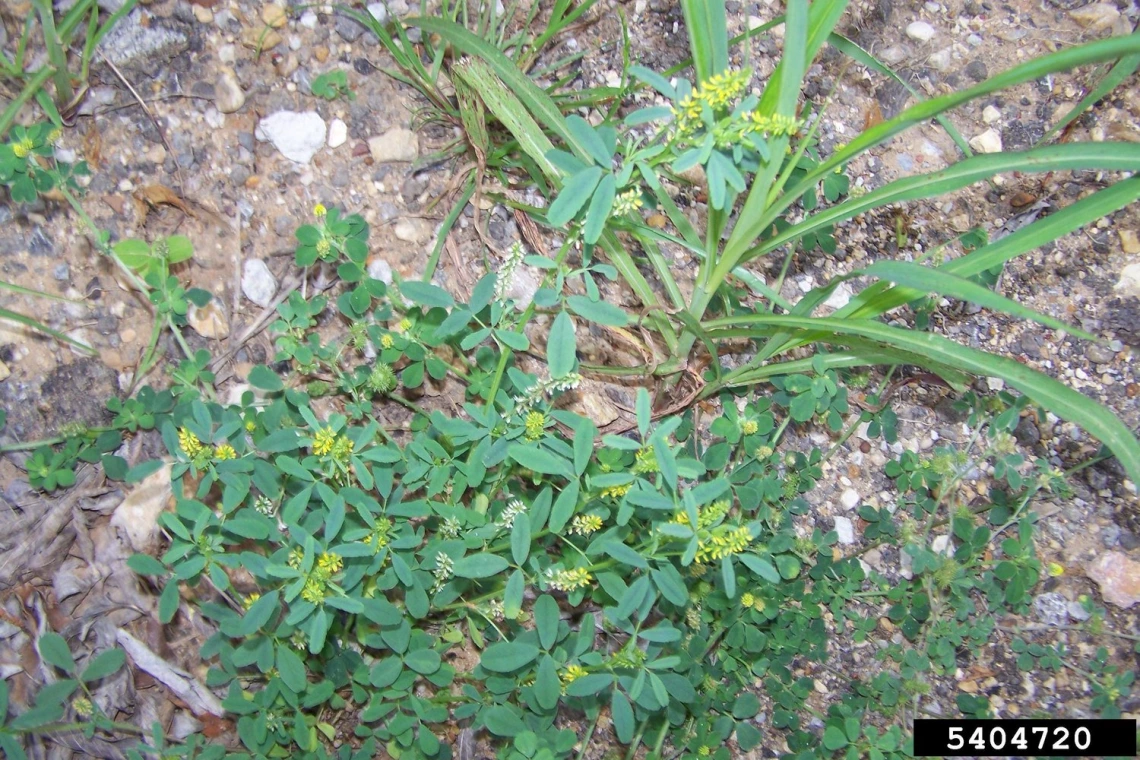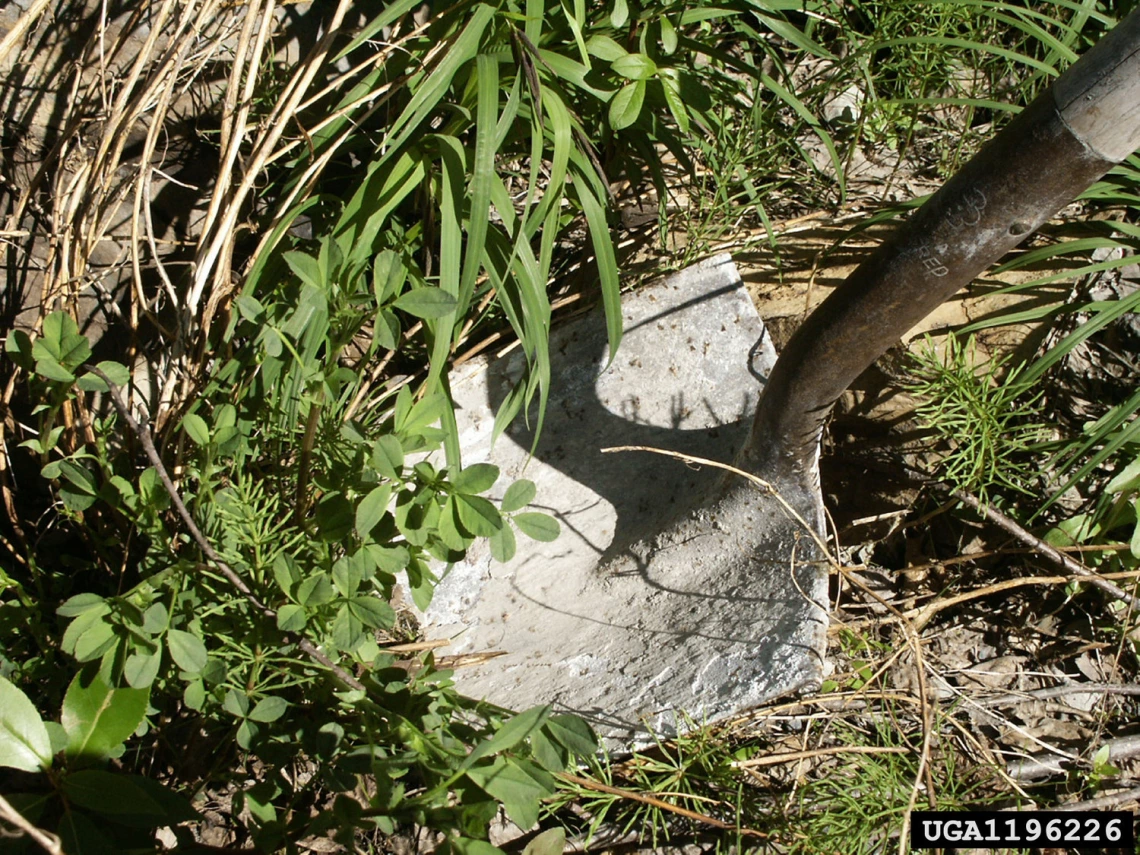Image
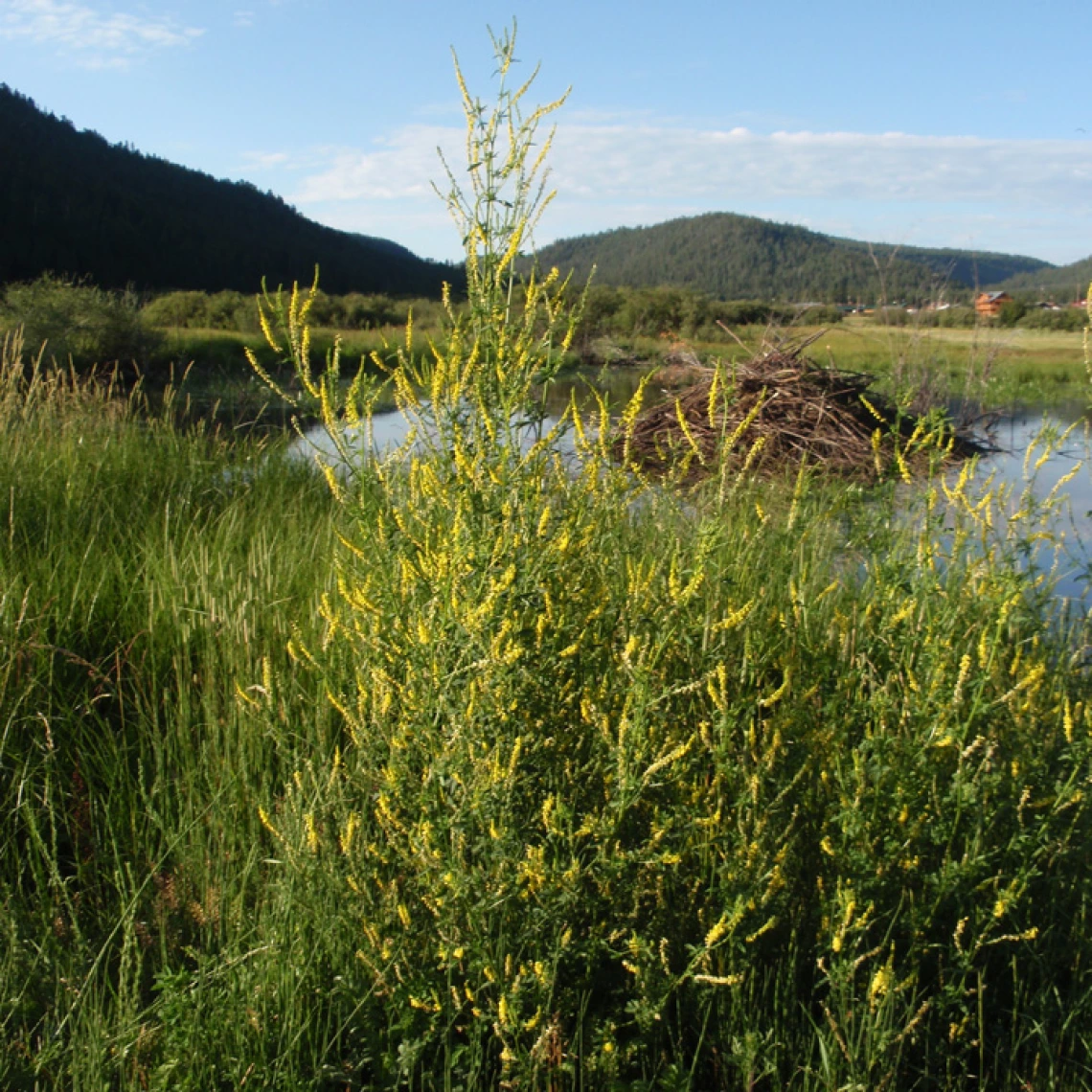
Sweetclover habit
Max Licher, swbiodiversity.org/seinet
Common Name(s)
Sweetclover
Yellow sweetclover
White sweetclover
Scientific Name
Melilotus officinalis
Family
Legume family (Fabaceae)
Reasons for concern
This plant is now naturalized over most of North America. It has a negative impact on wildlife habitat because it reduces native plant diversity. It can easily take over natural areas by overtopping and shading native sun-loving plants, significantly reducing native plant diversity and the pollinators which are dependent on them.
Classification
Non-native
Botanical description
Tall, branching herbaceous plant.
Leaves
Three leaflets for each leaf. They are wedge-shaped to elliptic, 1/3 to 1 ½ inches long and up to 2/3 inches wide, toothed along the edges, hairy or smooth, and on short stems.
Stem(s)
Slender. Erect. 2 to 6 feet tall. Many-branched above.
Flowers
Yellow or white, both fading to cream. Sweet-scented. Small pea-like flowers growing on slender spikes. Flowers appear spring through summer. Flowering occurs from May until frost.
Seeds
Hard seed coat makes them viable up to 30 years and winter hardy. Drought tolerant. Dispersed by water and wind.
Roots
Strong tap root
Native to
Europe and Asia
Where it grows
Full sun to partial shade. Invades disturbed areas and open habitats, such as roadsides, abandoned fields, pastures. Often in native plant communities throughout North America at elevations from 5,000 to 10,400 feet. Most common in moist areas. Also common in areas populated by desert shrub, sagebrush, pinyon-juniper, ponderosa pine.
Lifecycle
Annual or biennial
Reproduction
By seed
Weedy Characteristics
Sweetclover easily invades open areas and competes well for resources. Its seeds are viable for decades.
Control Strategies
Hand pull seedlings. Dig out larger plants before seeds are set. Step down any soil disturbance. Do not let them go to seed. Possibly cut down to ground level just before flowering. Cut stems can re-grow, so monitor well. Plant desirable species to outcompete invasives.
References
- Weed of the week: Yellow sweetclover (video) Coconino County Weed of the Week presentation
- Yellow sweetclover University of California Agriculture and Natural Resources IPM – Weed Gallery
- Clovers University of California Agriculture and Natural Resources IPM – Pests in Gardens and Landscape
- Invasive Weeds - Yellow Sweetclover US Forest Service, Tonto National Forest





